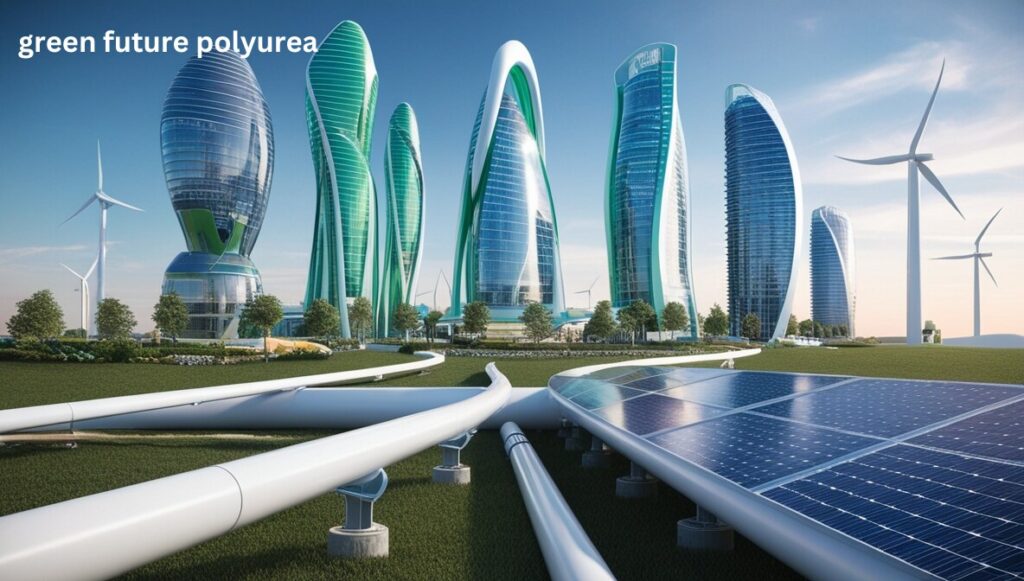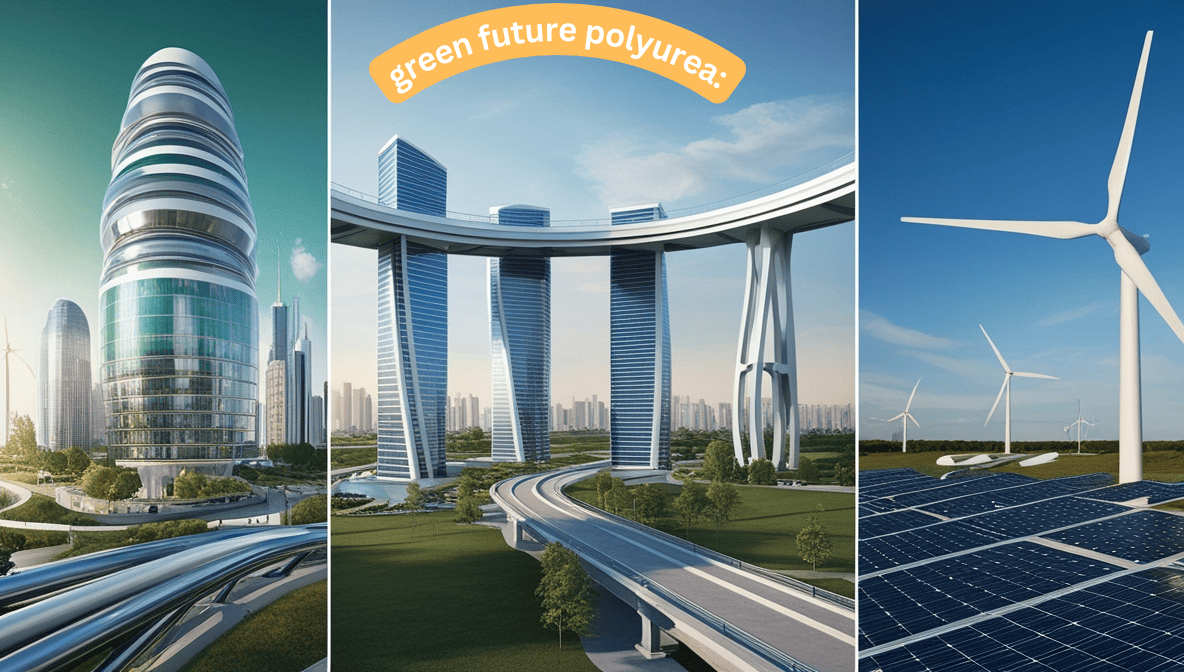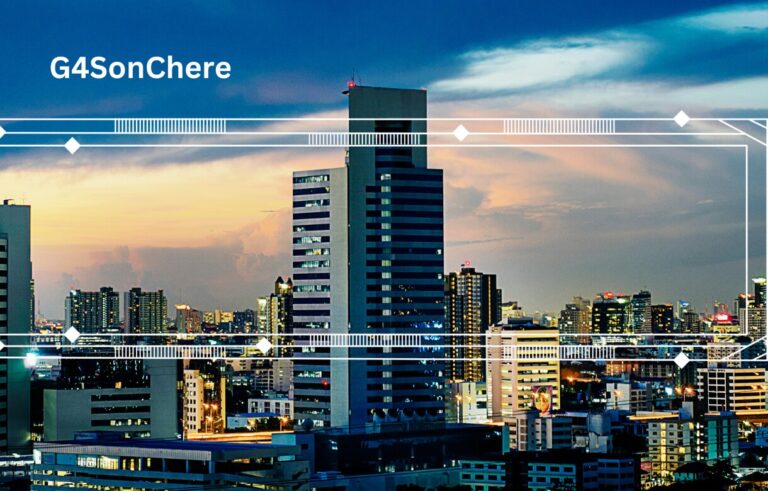
green future polyurea
When you think about the future of sustainable materials, green future polyurea probably isn’t the first thing that comes to mind. Yet, this versatile, durable coating is quietly transforming industries and paving the way for eco-friendly construction, manufacturing, and infrastructure development. So, what makes polyurea stand out in the quest for a greener planet? Let’s dive into its benefits, applications, and potential to shape a sustainable future.
Understanding Polyurea

Polyurea is a protective coating derived from the reaction of an isocyanate component with a resin blend. While this sounds technical, the result is anything but ordinary. The material offers incredible resistance to water, chemicals, and physical wear, making it a preferred choice for everything from waterproofing rooftops to protecting steel structures. Unlike many traditional coatings, polyurea cures quickly and doesn’t rely on harmful volatile organic compounds (VOCs), which contributes to cleaner air and reduced environmental impact.
Why Polyurea Matters for Sustainability
Environmental concerns push industries to rethink materials and processes. Polyurea steps up to the challenge by offering several green advantages. For starters, its longevity reduces the need for frequent replacements. This durability means less waste in landfills and fewer resources used for maintenance and repair.
Moreover, green future polyurea application process minimizes waste. Traditional paints and coatings often involve overspray and wastage, but polyurea’s precision application reduces excess material. Additionally, it doesn’t emit significant amounts of VOCs, making it safer for workers and nearby ecosystems.
Applications that Highlight Its Versatility
The range of polyurea applications speaks to its adaptability.
- Waterproofing Solutions
Polyurea shines in waterproofing projects. Its seamless application creates a perfect barrier against leaks in rooftops, basements, and tanks. Unlike older methods, this material doesn’t crack under pressure or extreme weather. - Infrastructure Protection
Bridges, tunnels, and parking structures endure relentless wear. green future polyurea safeguards these assets by offering a tough, protective layer that resists corrosion and abrasion. This resilience reduces the need for costly repairs and prolongs infrastructure lifespan. - Renewable Energy Projects
Solar farms and wind turbines benefit from polyurea coatings. By protecting the metal and composite components from harsh weather and UV rays, polyurea ensures these green energy solutions remain functional for decades. - Eco-Friendly Flooring
In commercial spaces, green future polyurea floors provide durability without compromising style or sustainability. They resist stains and heavy foot traffic while requiring minimal upkeep, making them a smart choice for reducing maintenance chemicals and energy usage. - Marine and Aquatic Uses
Boats, docks, and pipelines exposed to water demand robust materials. Polyurea’s waterproofing and anti-corrosion properties make it ideal for marine environments, reducing maintenance costs and extending the life of equipment.
Overcoming Common Misconceptions
While polyurea holds immense promise, it’s not a magical cure-all. Some critics argue that the production process isn’t entirely carbon-neutral. However, when you compare the lifecycle emissions and waste reduction benefits, polyurea often comes out ahead. For industries adopting this material, proper recycling and responsible sourcing can further improve its green credentials.
Steps Toward a Greener Future
To unlock the full potential of polyurea in promoting sustainability, it must be part of a comprehensive approach to greener practices. Here’s how companies can effectively integrate polyurea into broader environmental strategies:
1. Energy-Efficient Building Designs
Incorporating polyurea into energy-efficient building projects enhances both durability and performance. For instance, applying polyurea as a seamless waterproofing layer on roofs and walls reduces thermal bridging, leading to improved insulation. Combining this with modern energy-saving designs like optimized window placement, passive cooling systems, and smart HVAC systems creates buildings that consume less energy while maintaining occupant comfort.
2. Use of Renewable Energy
Polyurea coatings protect renewable energy infrastructure, such as wind turbines and solar panels, from wear and environmental damage. By safeguarding these systems, polyurea extends their operational life, ensuring continuous energy production. Pairing polyurea with renewable energy sources in buildings also supports decarbonization goals by reducing dependence on fossil fuels.
3. Waste Reduction and Resource Optimization
The application of polyurea minimizes material waste, unlike traditional coatings that often result in significant overspray. Furthermore, polyurea’s longevity reduces the frequency of repairs and replacements, which conserves raw materials and decreases the volume of construction waste sent to landfills. Companies can enhance this benefit by adopting circular economy practices, such as recycling old polyurea coatings or repurposing them where feasible.
4. Integration with Passive Design Strategies
Polyurea complements passive design techniques by enhancing building resilience against extreme weather conditions. For example, in buildings employing passive cooling strategies like phase-change materials (PCMs), polyurea can provide protective coatings to prevent leaks or damage, ensuring these systems perform optimally.
5. Collaboration Across Sectors
Sustainability isn’t achieved in silos. Collaborating with architects, engineers, and environmental scientists helps maximize the potential of polyurea in innovative green designs. Partnerships between industries can lead to new applications, such as using polyurea to strengthen urban infrastructure or reduce heat islands in cities.
6. Lifecycle Assessments and Accountability
Conducting lifecycle assessments ensures that polyurea’s environmental benefits outweigh its production impact. Companies can adopt transparent reporting practices to track their carbon footprints, resource use, and waste management efforts. Sharing these findings fosters accountability and drives improvements in sustainable practices.
By embedding polyurea within these comprehensive strategies, industries can transform how they approach sustainability. It’s not just about using better materials—it’s about using them wisely and in ways that amplify their environmental benefits.
Conclusion
Polyurea represents a step forward in sustainable material innovation. Its combination of durability, versatility, and environmental benefits make it a valuable tool in the fight against climate change and resource depletion. By adopting polyurea strategically, industries can protect infrastructure, reduce waste, and minimize environmental harm.
As more sectors embrace green materials, polyurea has the potential to shine even brighter. The future isn’t just about discovering new technologies but also making smarter choices with what we already have. Polyurea fits perfectly into this vision, proving that sustainability and practicality can go hand in hand.
Frequently Asked Questions
1. Is polyurea biodegradable?
Polyurea isn’t biodegradable in the traditional sense, but its long lifespan reduces overall waste. This durability often makes it a more sustainable choice compared to materials requiring frequent replacement.
2. Can polyurea replace all traditional coatings?
While polyurea offers many advantages, it isn’t suitable for every application. Certain surfaces or environments may require specialized coatings that meet different needs.
3. How does polyurea compare to epoxy?
Polyurea cures faster, resists wear better, and performs well under extreme conditions compared to epoxy. However, epoxy might be more economical in some cases. The choice depends on specific project requirements.
4. What are the costs involved?
Polyurea is often more expensive upfront than traditional coatings. However, its longevity and reduced maintenance needs often balance out the initial investment over time.
5. Is it safe for the environment?
Yes, polyurea is considered environmentally friendly due to its low VOC emissions and minimal waste during application. Proper disposal methods can enhance its eco-friendliness.





